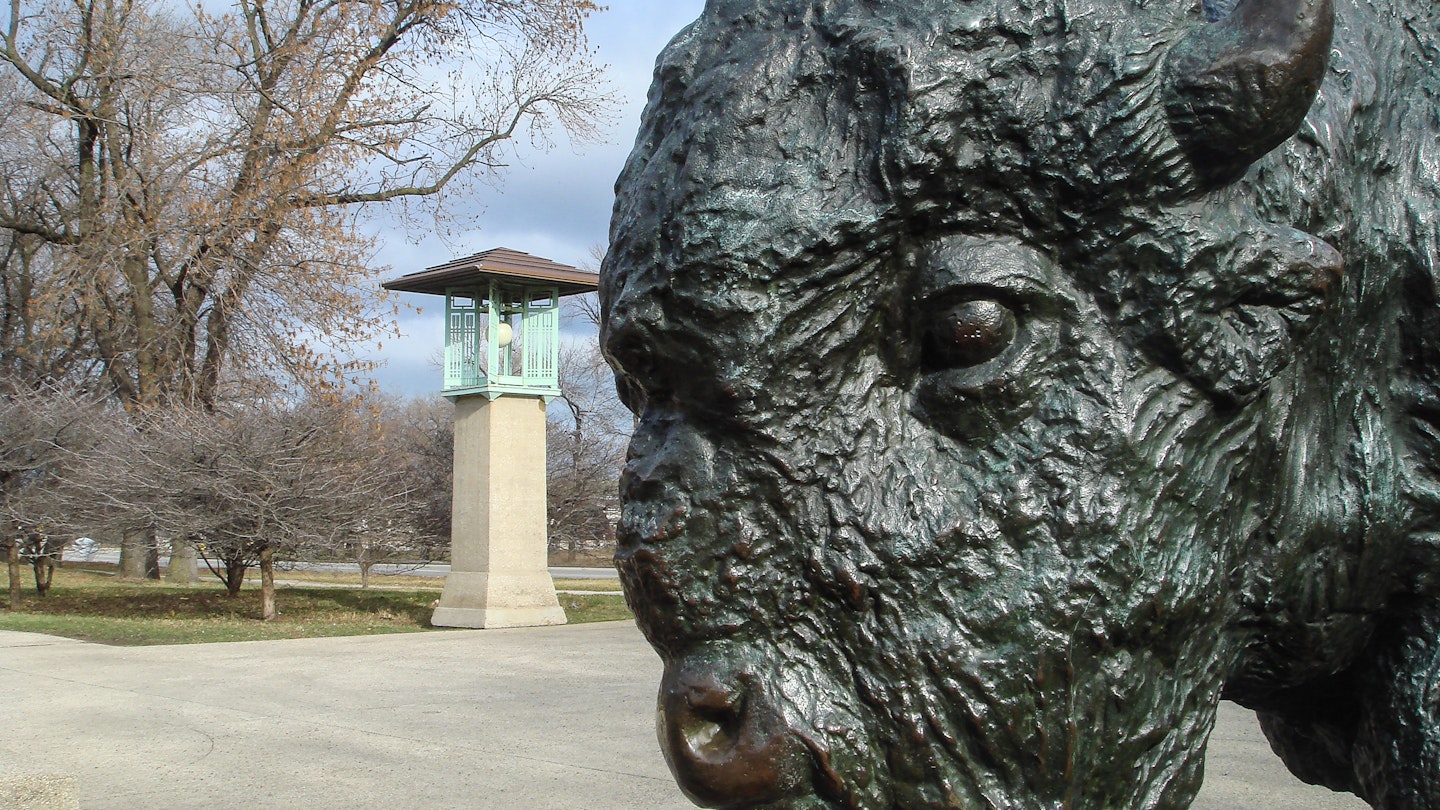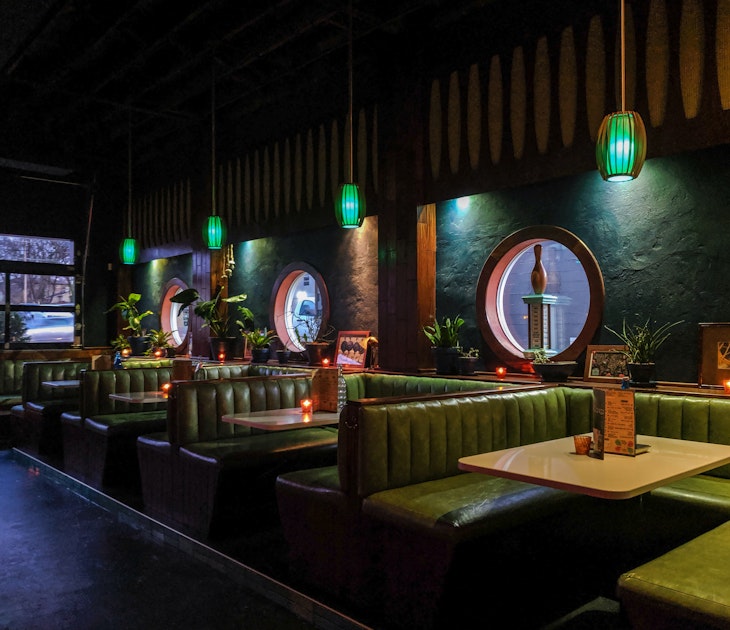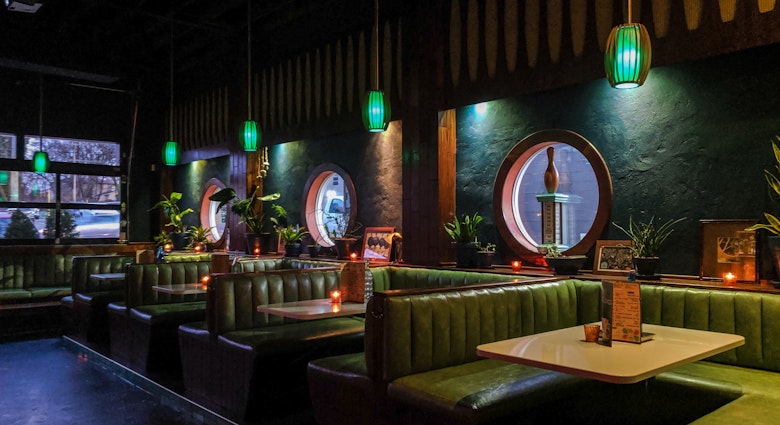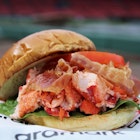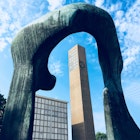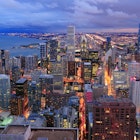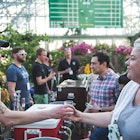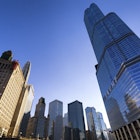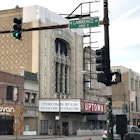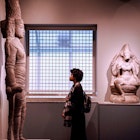The Windy City is more than its skyscraping towers and mega-museums downtown. Hop on the El train and travel a few miles onward, and soon bohemian cafes, old curiosity shops and Louis Armstrong's favorite club reward beyond-the-norm experience seekers.
Lincoln Square
Good for: beer gardens and trendy eats
A bakery that mills its own grain, a taco-in-the-bag eatery, a hand-blended spice shop – Lincoln Square gets trendier by the day. But the neighborhood's old German roots hold strong, and it's the beer-and-bratwurst-style businesses that provide the most fun. The kitschy, wood-paneled Huettenbar is straight out of the Black Forest and taps a mean pilsner. Gene's Sausage Shop rocks a meaty rooftop beer garden. For entertainment, the Old Town School of Folk Music has the action. Big names across all musical genres often turn up to unplug in the intimate venue. Take the Brown Line train to Western for the thick of it; it's a half-hour ride from downtown Chicago.

Humboldt Park
Good for: Puerto Rican cafes and lagoon-rich green space
Humboldt Park is Logan Square's next-door neighbor, though it's a bit rougher. The community centers on the namesake park, a beauty flush with gardens, chirping birds, walking paths and a fishing lagoon. The Institute of Puerto Rican Arts and Culture is on the grounds too, and has funky free exhibits ongoing. Out the front door, island-food cafes waft fried plantains and garlicky jibarito sandwiches along the Puerto Rican Passage, aka Division St. Sensing a theme? The neighborhood is indeed a Puerto Rican district. But it's also getting hipsterized. Wander to the corner of Augusta and California Aves to see the future: a cigar-and-coffee shop, a charcuterie-and-wine bar, a curio-and-zine store, and on it goes. Bus 70 covers Division St.
Avondale
Good for: Polish culture and fringe theater
Chicago has one of the largest Polish populations outside of Poland, and Avondale is a hub for the community. Delis wafting kielbasas and bars advertising piwo (beer) stack up along Milwaukee Avenue, the area's main vein. These days, artists and hipsters have started to spill over from Logan Square, adding fringe venues to the mix. Prop Thtr is a stalwart, staging provocative new plays at its storefront space. Next door, Parachute (parachuterestaurant.com) improvises with Korean street food (and recently got a Michelin star for its efforts), while nearby Kuma's draws tattooed types for its heavy metal-themed burgers.
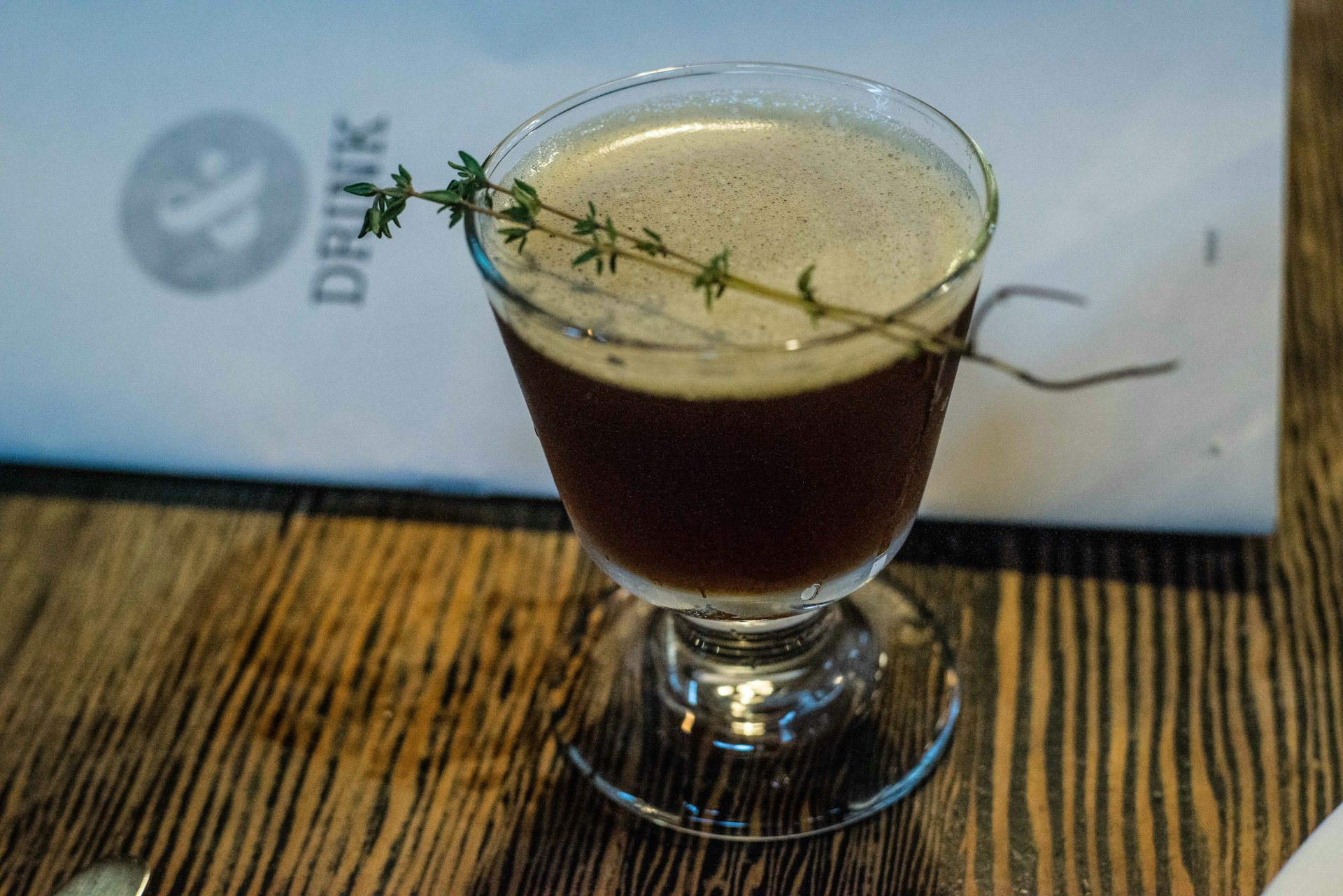
Logan Square
Good for: What's new and cool
Far-flung and with an outsider's edge, Logan Square is Chicago's current 'it' 'hood, the place to go for the hippest tiki lounge or cigar-box guitar shop. By day a handful of sights intrigue, such as the beeping, robot-voice games at Logan Hardware's Vintage Arcade Museum, and the rock-and-roll street art at Galerie F (galerief.com). By night it's all about eating and drinking in cool-cat spots. Industrial Revolution Brewing serves as the neighborhood's beery clubhouse, while low-key Longman & Eagle plays the role of authentic tavern, with Michelin-starred comfort food downstairs and a six-room inn upstairs. Reach it all via the Blue Line El train; it's a 20-minute ride from downtown.
Ukrainian Village
Good for: Onion-domed churches and edgy rock
Little Ukrainian Village packs a lot into its tidy, near west side confines. The Ukrainian Institute Of Modern Art offers groovy (and free) exhibits good for a quick browse. The onion domes of several churches pop up nearby, remnants of the Eastern European immigrants who first lived in the neighborhood. A young and stylish crowd has moved in since. Even so, Chicago Ave and Division St – the main commercial roads – mix rye bread bakeries and borscht restaurants with vegan cafes and craft beer bars. At night, rockers stream in to hear edgy alternative bands at the divey Empty Bottle. The Blue Line station at Division comes closest to Ukie Village.

Pilsen
Good for: Mexican art and vintage shops
A few miles southwest of downtown, Mexican culture combines with Chicago's bohemian underground in Pilsen. The top-draw National Museum of Mexican Art is the focal point with its terrific collection of classical paintings, folk art and politically charged pieces. Activists, artists and students congregate at La Catrina Cafe (facebook.com/lacatrinacafeon18) for bottomless cups of coffee and avant-garde art exhibitions, while hipsters head over to Dusek's (dusekschicago.com) for beer-inspired dishes and indie bands. Fashionistas trawl the vintage shops that emerge between taquerias on 18th St. Knee Deep Vintage (kneedeepvintage.com) and Comet Vintage (cometvintagechicago.com) are good bets for fringe jackets or Jackie O-style scarves. The Pink Line train to 18th St drops you in Pilsen's mural-splashed midst.
Bridgeport
Good for: Artists' studios and community bars
Five Chicago mayors – including the Daleys – came from this working-class neighborhood on the South Side. Though the tidy bungalows and Irish pubs remain the same, the gastro-taverns and nano-breweries would have the old men blinking in disbelief. So would the art. Zhou B Art Center and Bridgeport Art Center fill two massive warehouses with tastemaking galleries and studios on 35th St. Co-Prosperity Sphere (coprosperity.org) kicks it up a notch with experimental exhibitions and performances. The owner also runs Maria's Packaged Goods and Community Bar, where hard-to-find craft beers flow and DJs spin. Bus 8 motors along Halsted St to the area.
Bronzeville
Good for: African American history and soul food
Once home to Louis Armstrong and poet Gwendolyn Brooks, Bronzeville thrived as a vibrant center of black culture from 1920 to 1950, akin to New York City’s Harlem. It descended into some bleak years, but it's getting its groove back as young professionals move in. Humble-looking Pearl's Place (pearlsplacerestaurant.com) serves real-deal soul food on white tablecloths, heavy on the fried chicken and sweet potato pie. Jokes and Notes (jokesandnotes.com) is the city's only black stand-up club. Meyers Ace Hardware throws back to the old days: the building used to be the famed Sunset Cafe, where Armstrong played in the house band. Many of the club's original elements are still intact. The Green Line train serves the area, which lies about 4 miles south of downtown.
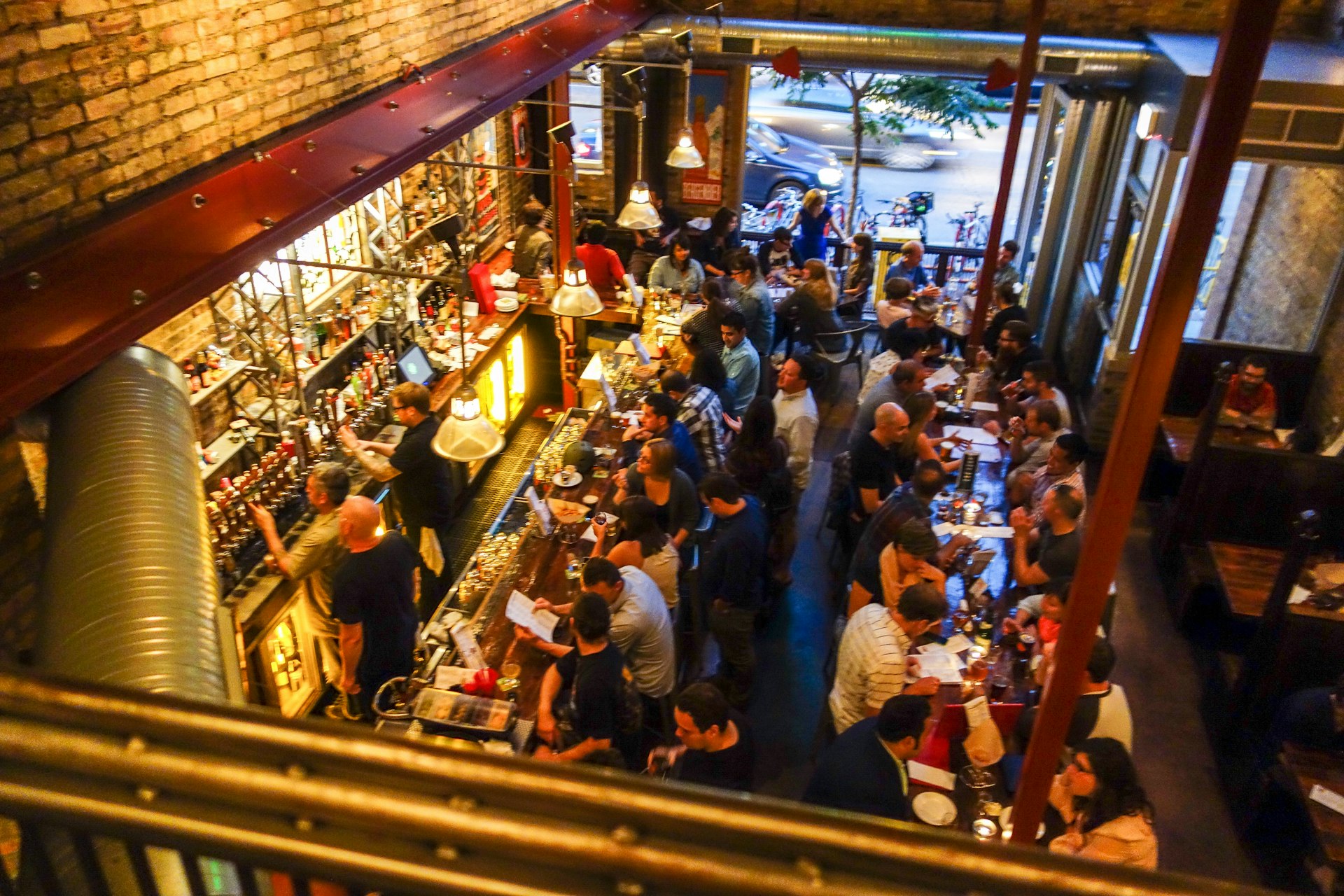
Andersonville
Good for: Swedish bakeries and antique shops
Andersonville is a former Swedish enclave centered on Clark St, where timeworn European-tinged businesses mingle with new foodie restaurants, vintage shops and gay and lesbian bars. Places like the butter-lovin’ Swedish Bakery carry on the legacy of the original inhabitants. Eccentric spots like Woolly Mammoth Antiques & Oddities (woollymammothchicago.com) show the spirit of the new wave. So you can buy almond tarts and jars of old dentures in equal measure, which is nice. Hopleaf ranks as the local hot spot, beloved for its Belgian frites, ale-soaked mussels and 200 types of beer. Get here on the Red Line train to Berwyn or bus 22 north on Clark St.

